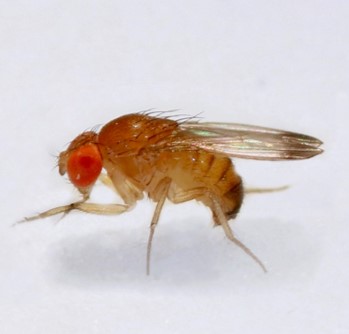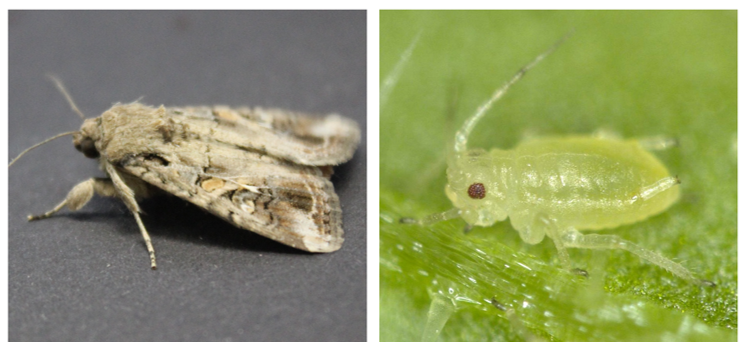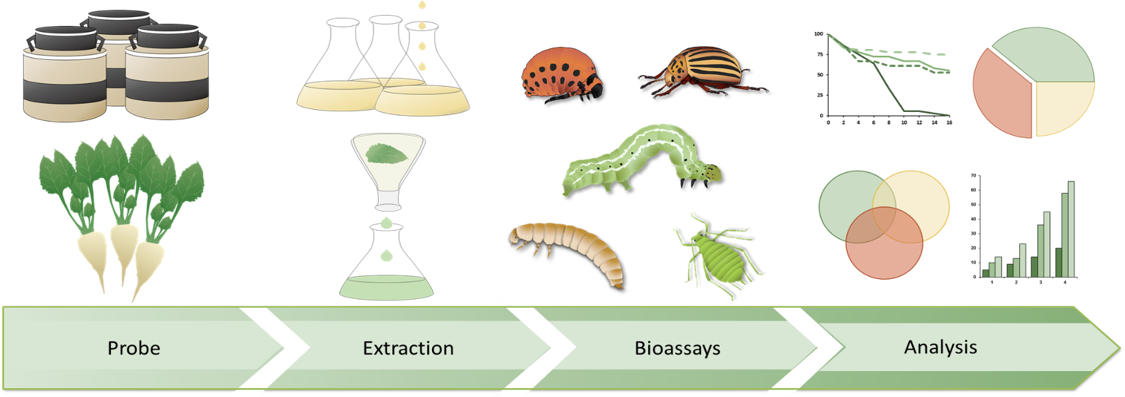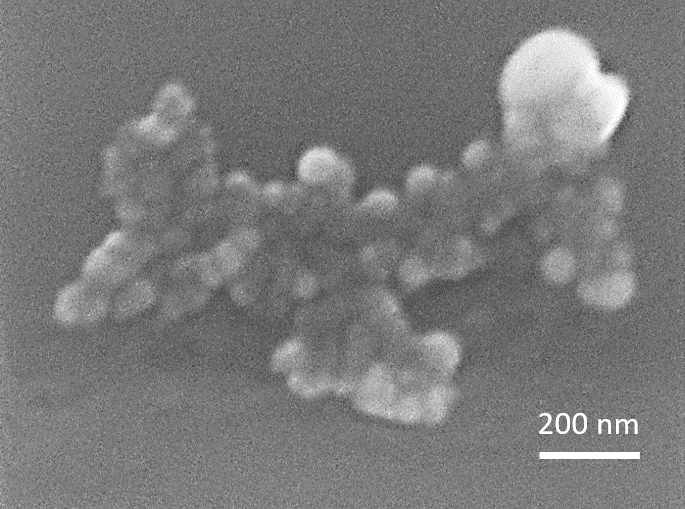
Pests and vector insect control




Research Motivation
Insect pests are responsible for up to 30 % of the worlds` total crop loss, with an estimated economic damage exceeding €500 billion annually. This threat is expected to increase with climatic changes, increased travel activities and globalized trade as key factors promoting the dispersal of invasive pests.
Plant protection is an arms race since insect pests are becoming rapidly resistant against insecticides. In addition, continued regulatory restriction of available compounds on the market, is diminishing grower options to prevent crop damage caused by insects. Our mission is to develop new and environmentally friendly strategies for plant protection.
Offering solutions
We are providing contract research and strategical collaborations to address the urgent need of alternative and made-to-measure tools in plant protection. Below is a non-exhaustive list of solutions we are offering.
High-throughput screening:
The Fraunhofer IME-BR has established various high-throughput insect screening systems for identifying new compounds and gene targets with biological activities. Insects can be reared in big numbers with little effort, they exhibit generally short generation cycles allowing large and cost-effective investigations. In our portfolio we offer screening in different insect model systems like the beetle Tribolium castaneum or aphid Acyrthosiphon pisum to obtain active candidates. These candidates are subsequently validated in the appropriate insect pest species. We also use severe agricultural pests like the aphid Myzus persicae, the moth Spodoptera frugiperda, the fly Drosophila suzukii or the beetle Diabrotica virgifera virgifera. The testing of the bioactivity of natural product samples is achieved through monitoring of different life-history parameters like mortality, movement activity, growth inhibition, fecundity or fertility. We are also capable of analyzing potential impacts on beneficial insects like pollinators such as the western honeybee Apis mellifera.
Microbial strain collection:
The Fraunhofer IME-BR hosts and curates a strain collection library consisting of insect pathogens such as bacteria, fungi and viruses. The Fraunhofer IME-BR has extensive laboratory infrastructure and state-of-the-art technology to enlarge the collection. Novel candidates of insect associated microbes are isolated, identified, and further tested for their insecticidal properties. The strain collection is an in-house source for establishing and standardizing culture conditions, extract libraries, analytics and dereplication, ‘-Omics’ approaches, development of down- and upstream processes and are finally subjected to rigorous bioassay testing. Knowledge based analysis of the results is completing the profile of the Fraunhofer IME-BR.



RNAi - a novel approach:
RNAi is a natural mechanism in eukaryotic cells triggered by double-stranded RNA (dsRNA) that is considered to be a specific and safe alternative for pest control. This post-transcriptional gene silencing mechanism disrupts the expression of essential genes in a sequence specific manner. Innovative modes of application are currently developed for different pest targets. The Fraunhofer IME-BR has the expertise to develop RNAi in plant protection proven by several key publications, patents and fruitful collaborations with leading companies from the agro field.
RNAi formulations:
One key requirement for the agricultural efficiency of such RNA-based plant protection technologies is the optimal chemical formulation of the active RNA molecules.
RNA as a building block of all life is degraded in the environment within a few days without leaving harmful residues. This key advantage of RNA-based plant protection will reduce the environmentally harmful accumulation of dangerous residues derived from conventional pesticides.
A well-designed formulation will protect the active dsRNA from degradation on the surface of plants and in the digestive tract of the target pest during feeding. Once inside the insect gut, the formulation must enable the cellular uptake and release of the active RNA molecules, allowing them to interact with their intracellular targets. Current approaches use microparticles and nanoparticles in colloidal dispersions. The formation of such particulates is controlled by the ionic interactions between positively charged substances and negatively charged RNA.
Insect pheromone formulations:
Semiochemicals, including pheromones, play a major role in the intraspecific and interspecific communication structures of insects for the purposes of orientation, feeding, defense and mating. Plant protection approaches utilize pheromone compounds for species-dependent mating disruption, which interferes with the ability of males to locate females by placing additional pheromone sources in fields. Successful pheromone-based plant protection systems must provide sufficient concentrations of the active pheromone over time with an appropriate spatial distribution in the field. Although traces of semiochemicals can be used to direct species-dependent behavioral responses, mating disruption often fails under field conditions for reasons that remain unclear.
We design and test novel pheromone-releasing materials and develop formulations for applications in conventional and organic farming. We aim to improve pheromone release characteristics under laboratory and field conditions, and test our formulations by monitoring mating disruption efficiency and confirming the degradation of the carrier materials into harmless natural residues.
 Fraunhofer Institute for Molecular Biology and Applied Ecology IME
Fraunhofer Institute for Molecular Biology and Applied Ecology IME